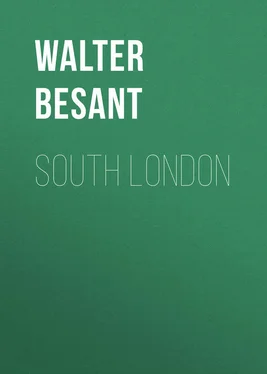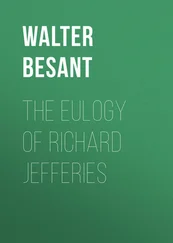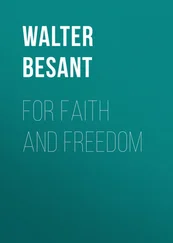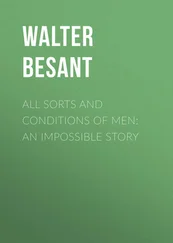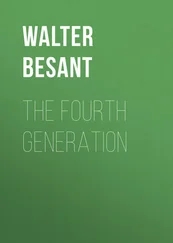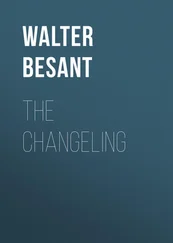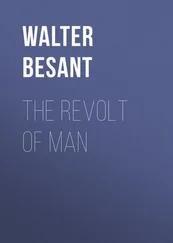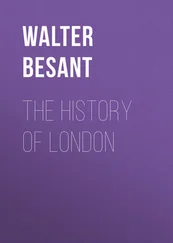Walter Besant - South London
Здесь есть возможность читать онлайн «Walter Besant - South London» — ознакомительный отрывок электронной книги совершенно бесплатно, а после прочтения отрывка купить полную версию. В некоторых случаях можно слушать аудио, скачать через торрент в формате fb2 и присутствует краткое содержание. Жанр: foreign_antique, foreign_prose, на английском языке. Описание произведения, (предисловие) а так же отзывы посетителей доступны на портале библиотеки ЛибКат.
- Название:South London
- Автор:
- Жанр:
- Год:неизвестен
- ISBN:нет данных
- Рейтинг книги:3 / 5. Голосов: 1
-
Избранное:Добавить в избранное
- Отзывы:
-
Ваша оценка:
- 60
- 1
- 2
- 3
- 4
- 5
South London: краткое содержание, описание и аннотация
Предлагаем к чтению аннотацию, описание, краткое содержание или предисловие (зависит от того, что написал сам автор книги «South London»). Если вы не нашли необходимую информацию о книге — напишите в комментариях, мы постараемся отыскать её.
South London — читать онлайн ознакомительный отрывок
Ниже представлен текст книги, разбитый по страницам. Система сохранения места последней прочитанной страницы, позволяет с удобством читать онлайн бесплатно книгу «South London», без необходимости каждый раз заново искать на чём Вы остановились. Поставьте закладку, и сможете в любой момент перейти на страницу, на которой закончили чтение.
Интервал:
Закладка:
The place was essentially a suburb. There were no trades or industries in it, except that of fishing; the fishermen had their cottages dotted about all along the Embankment; a few watermen lived here, but that was perhaps later: other working men there were none, save the cooks and varlets of the great houses, and the 'service' of the inns. Because the air was fresh and pure, blown up daily with the tides; and because the place was easy of access, by river, to Westminster and the Court, many great men, ecclesiastics and nobles, had their town houses here: the Bishop of Winchester, the Bishop of Rochester, the Prior of Lewes, the Abbot of Hyde, the Abbot of Battle, the Earls of Surrey, Sir John Fastolfe, also the Brandons. Also, because it was easy of access by bridge and river to the City, the merchants brought their goods and warehoused them here in the inns at which they stayed, while they went across the river and transacted their business. It was a suburb which, in modern times, would be described as needing no poor rate. Later on there grew up, as we shall see, a class of the unclassed – a population of rogues and vagabonds, thieves, and sanctuary birds.
The government of the place as a whole was difficult, or rather impossible. There were several 'Liberties;' the Liberty of Bermondsey; that of the Bishop of Winchester; that of the King; that of the Mayor. The last contained the part of the Borough lying between St. Saviour's Dock on the west and Hay's Dock on the east, with a southern limit just including St. Margaret's Church. This very small district was called the Gildable Manor: it was conceded by the King to the City of London in the thirteenth century in order to prevent the place from becoming the home and refuge of criminals from the City. As the other liberties remained outside the jurisdiction of the City, the alleviation gained was not very great: criminals still dropped across the river, finding shelter on the Lambeth Marsh or the marsh between Bermondsey and Rotherhithe. It was from this unavoidable hospitality to persons escaping from justice that Southwark received a character which has stuck to it till the present day. In the centuries which include the twelfth to the fifteenth, however, South London, so far as it was populated at all, was the residence of great lords and the place of sojourn for merchants from the country. As yet the reputation of Southwark was spotless and its dignity enviable. London itself had no such collection of palaces gathered together so closely. As for the land, that lay low, but was protected by the Embankment from the river. Many rivulets flowed slowly across the misty meadows; many ponds lay about the flats; there was an abundant growth of trees everywhere, so that parts of the land were dark at midday by reason of the trees growing so close together. The rivulets were pretty little streams; willows grew over them; alders grew beside them; they were coloured brown by the peaty soil; on their banks grew wild flowers – the marsh mallow, the anemone, the hedgehog grass, the frogbit, the crowfoot, and the bitter-wort; orchards flourished in the fat and fertile soil. The people had almost forgotten the special need of their Embankment. Yet when, in the year 1242, the Embankment at Lambeth was broken down, the river rushed in and covered six square miles of country, including all that part which is now called Battersea.
Remember, however, that as yet there was not a single house upon the whole of Lambeth Marsh, nor upon the whole of Bermondsey Marsh. The houses began near what is now the south end of Blackfriars Bridge; they faced the river, having gardens behind them. On the other side of the Bridge the houses extended farther, going on nearly opposite to Wapping.
The place was well provided with prisons; every Liberty had its own prison. Thus there were the Clink of the Winchester Liberty, that of the Bermondsey Liberty, the 'White Lion' of Surrey, the King's Bench, and the Marshalsea, all in the narrow limits we have laid down. And there were also, for the delectation of the righteous and the terror of evil-doers, the visible instruments for correction. In every parish there was the whipping post – one in St. Mary Overy's churchyard, put up after the time of the monks; one at St. Thomas's Hospital; there was the pillory for neck and hands, generally with somebody on it, but the pillory was movable; there was the cage – one stood at the south end of the Bridge – women had to stand in the cage; there were stocks for feet wandering and trespassing; there were pounds for stray animals.
Markets were held in the churchyard of St. Margaret's; in the precinct of Bermondsey Abbey; and along the street called 'Long Southwark' – now High Street – from the Bridge to St. Margaret's Hill. But we must not suppose that the markets of Southwark presented the same crowded appearance, and were carried on with the same noise and bustle, as those of Chepe and Newgate on the other side.
Everything, in those days, was quiet and dignified in Southwark. The Princes of the Church arrived and departed, each with his retinue of chaplains and secretaries, gentlemen and livery. Kings and ambassadors rode up from Dover through Long Southwark and across the Bridge. The mayor and aldermen in new cloaks of red murrey and gold chains sallied forth to meet the King returning from abroad. Cavalcades of pilgrims for Canterbury, Compostella, Seville, Rome, and Jerusalem rode out of Southwark when the spring returned; and every day there arrived and departed long lines of packhorses laden with the produce of the country and with things imported for sale in London City. Pilgrims, merchants, travellers, all put up at the Southwark inns. The place was nothing but a collection of inns; the ecclesiastics stayed here for a few weeks and then went away; the great lords came here when they had business at Court and then went away again; the merchants came and went: by itself the place had, as yet, no independent life or character of its own at all.
There were two Monastic Houses. Both were stately; both are full of history. Let us consider the House of Bermondsey, because it is less generally known than the other of St. Mary Overy or Overies.
The Abbey of St. Saviour, Bermondsey, was the Westminster of South London. Like Westminster, Bermondsey stood upon a low islet in the midst of a marsh; at the distance of half a mile on the north ran the river; half a mile on the west was the Causeway; half a mile on the south was the Dover road. It is significant of the seclusion in which the House lay that the only road which connected it with the world was that lane called Bermondsey or Barnsie or Barnabie Lane, which ran from the Abbey to St. Olave's and so to London Bridge. It was not, like Westminster, a place of traffic and resort. It lay alone and secluded, separated from the noise and racket of life. When the marsh had been gradually drained and the Embankment continued through Rotherhithe to Deptford and beyond the Greenwich levels, the Abbey lands round the islet became extremely fertile and wooded and covered with sheep and cattle.
The House was founded in the year 1182 by one Ailwin Childe, a merchant of the City, an Alderman also and one of the ruling families of London. He was the son of an elder Ailwin, who was a member of that 'Knighten Guild' which, with all its members and all its property – the land which now forms the Ward of Portsoken – went over to the Priory of the Holy Trinity. Religion of a practical and real kind was therefore hereditary in the family. The elder Ailwin became a monk, the younger founded a monastery; his son, the third of the family of whom we know anything, became the first Mayor of London, and remained Mayor for twenty-four years – the rest of his life.
The whole of history from the ninth to the fifteenth century is full of a pathetic longing after a religious Order, if that could be found, of true and proved sanctity. One Order after the other arises; one after the other challenges respect for reputed holiness of a new and hitherto unknown kind: in fact, it commands the respect of the people who always admire voluntary privation of what they value so much – food and drink; it receives endowments, gifts, foundations of all kinds; it then departs from the ancient rule, and quickly loses its hold upon the people. This is the simple history of Benedictine, Franciscan, Cistercian, and all the rest. However, at the close of the eleventh century the Cluniac was in the highest repute for a rigid Rule, strictly kept: and for an austerity strictly enforced. It was a Cluniac House which Ailwin Childe set up in Bermondsey, and which Earl de Warren, who also founded the Cluniac House of Lewes, enriched.
Читать дальшеИнтервал:
Закладка:
Похожие книги на «South London»
Представляем Вашему вниманию похожие книги на «South London» списком для выбора. Мы отобрали схожую по названию и смыслу литературу в надежде предоставить читателям больше вариантов отыскать новые, интересные, ещё непрочитанные произведения.
Обсуждение, отзывы о книге «South London» и просто собственные мнения читателей. Оставьте ваши комментарии, напишите, что Вы думаете о произведении, его смысле или главных героях. Укажите что конкретно понравилось, а что нет, и почему Вы так считаете.
